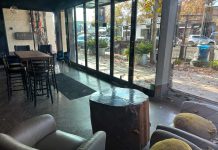To offset center’s operational costs, consultant studies
possible partnerships
GILROY
Top-level city administrators told a consultant to find more financial options for the city’s potential arts center after they heard what they already expected: The project is too expensive as planned, according to Community Services Director Susan Andrade-Wax.
The center to be built on the northwest corner of Seventh and Monterey Streets in 2009 would set the city back about $25 million, up from the original $9 million the city planned for, Andrade-Wax said. She and City Administrator Jay Baksa met with AMS Planning and Research Friday to discuss the possibility of joining the center with revenue-generating retail, office or residential space, maybe even a pecuniary partnership with the Gilroy Unified School District, Andrade-Wax said.
It is important to come up with such contingency plans because the city council will likely ask for them Feb. 20, when it hears that the center’s cost remains well above budget, said Andrade-Wax. Expensive steel and concrete have catapulted construction costs from about $250 per square foot to anywhere from $550 to $610 per square foot, she said.
What is more stressful is that other cities with art centers usually subsidize 30 to 40 percent of their operations, or about a few hundred-thousand dollars each year, Andrade-Wax said.
Councilmembers such as Dion Bracco have said it is important for Gilroy’s project to stand on its own, partly because the city does not have a redevelopment agency, unlike most cities with arts centers, according to Andrade-Wax. A redevelopment agency redirects existing taxes from the state into local coffers for specific projects such as sidewalk and street repairs, façade improvements and seismic retrofitting.
That is why the Gilroy Foundation and the Gilroy Arts Alliance teamed up to raise $1.8 million for the center’s operational costs once the city builds it, according to Donna Pray, the foundation’s executive director. GAA President Carol Harris and other GAA members have said the group hopes for $3 million so it can earn enough interest to keep the center afloat without city money.
While AMS brain-storms, though, fund-raising remains on hold, according to Pray.
“We are in a holding pattern until the new business plan is finished,” Pray said of AMS’s work, which will last another couple of months and cost the city about $30,000, according to Andrade-Wax.
“We’re just waiting because we want to know if there will be a design change,” Pray added. “We might have to restructure our fund-raising efforts.”
A design change could be in order, but Andrade-Wax also said she remains hopeful that the center will ultimately sustain itself. Perhaps it won’t be the same large center everyone imagines if the city decides to shrink its size and, therefore, its costs. As planned, a large center could potentially generate more revenue, but it would cost more to run, and the city might have to foot this bill in an emergency.
A smaller center, on the other hand, would cost less to run without the same revenue power.
“Either way it’s going to be a challenge, and that’s what (AMS) let us know,” said Andrade-Wax.













